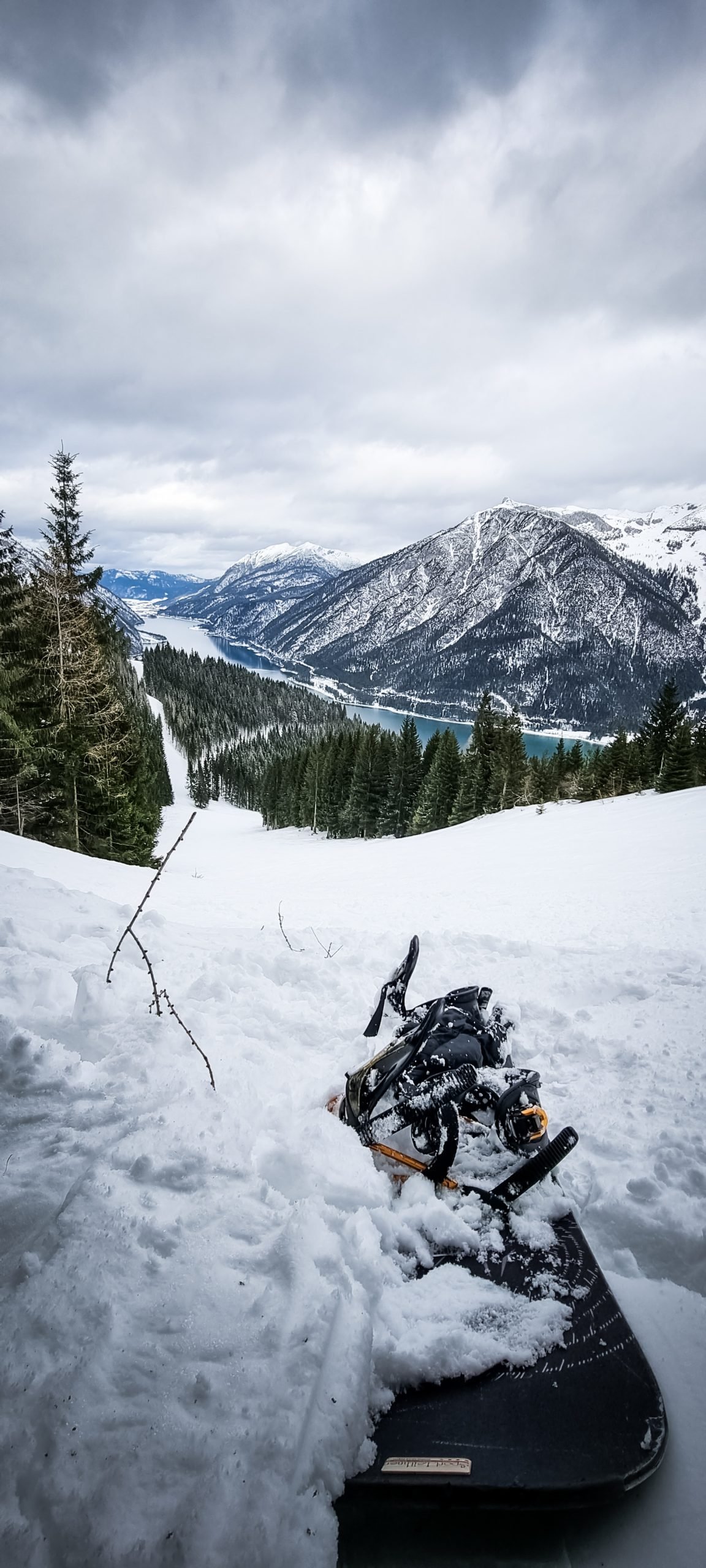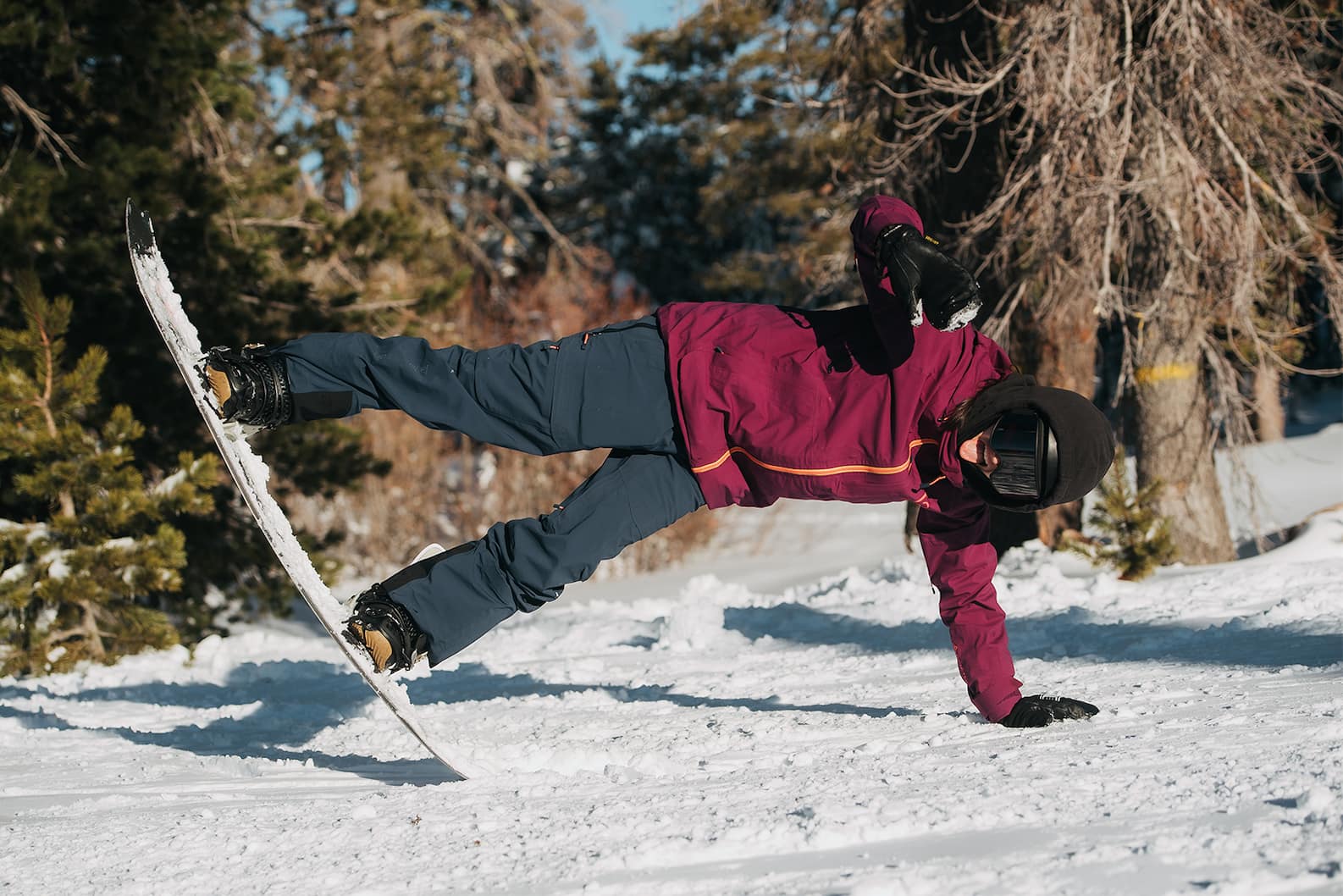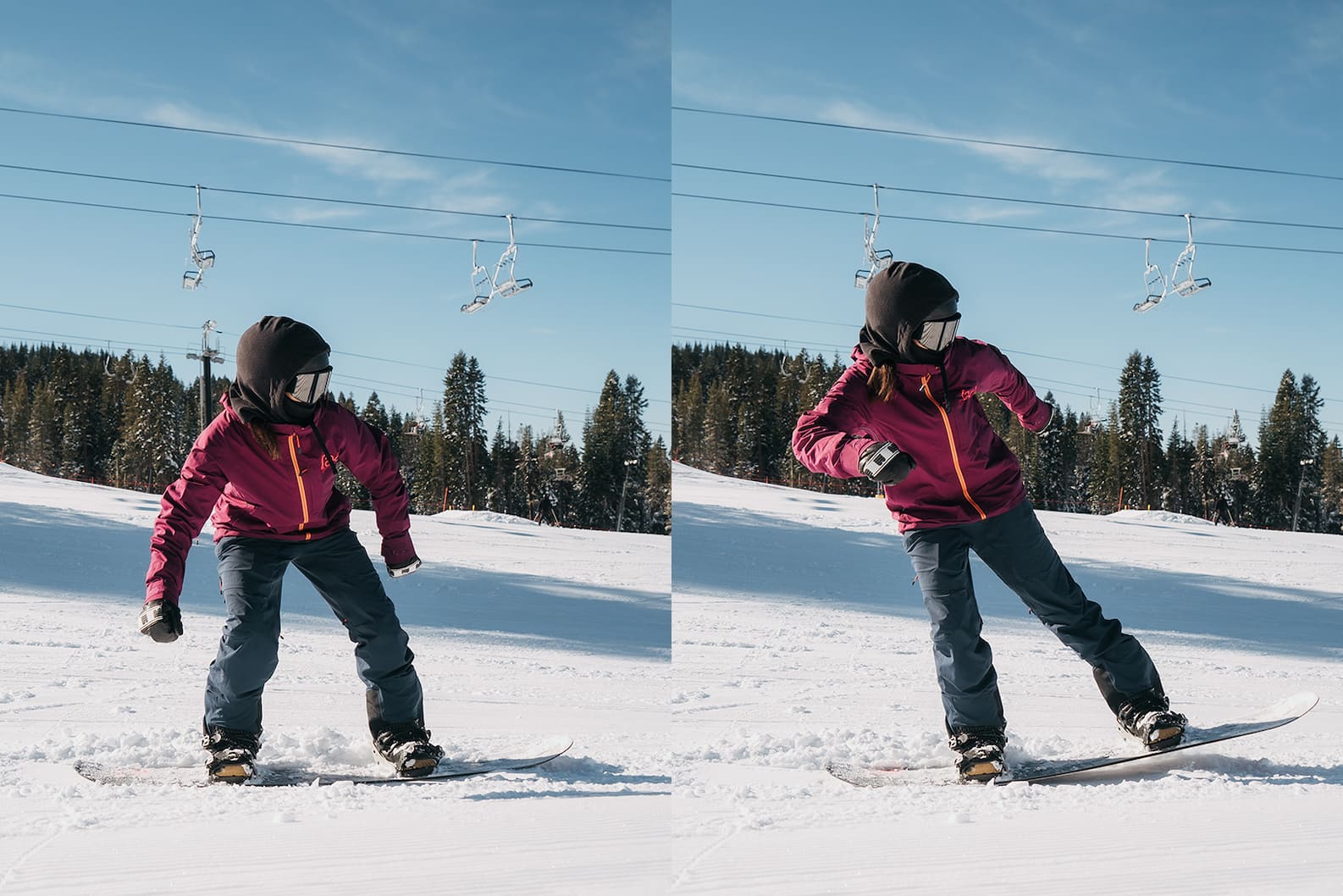
Progression Unleashed: Setting and Achieving Snowboarding Goals
Written: editor | September 1, 2023

Beginner Level Goals
Congratulations on taking up snowboarding! As a beginner, setting goals is crucial to your progression and development on the slopes. Here are three key goals to help you on your snowboarding journey.
Mastering basic snowboarding techniques
Start by focusing on mastering the fundamental techniques of snowboarding. This includes learning how to properly balance, control your speed, and execute basic turns. Practice your stance, weight distribution, and edge control to ensure a solid foundation.
Improving balance and control while riding
As you gain confidence, focus on improving your balance and control while riding. Work on maintaining a stable and centered position on the board, distributing your weight evenly. Practice controlling your speed through turns and varying terrain. This will help you navigate different snow conditions and challenging slopes with ease.
Building confidence on different terrains
Challenge yourself by riding on different terrains. Start with groomed runs and gradually progress to more challenging terrain such as moguls, powder, and steep slopes. Pushing your boundaries will help you build confidence and enhance your overall snowboarding skills. Take lessons or ride with more experienced riders to gain valuable insights and tips.
Remember, snowboarding is a journey, and it takes time and practice to improve. Set realistic goals and work towards them at your own pace. Celebrate every small accomplishment along the way and enjoy the thrill of progressing as a snowboarder. Keep pushing yourself, and soon you'll be riding with confidence and style on any mountain!

Intermediate Level Goals
Congratulations on reaching the intermediate level of snowboarding! Now it's time to set some goals to take your riding skills to new heights. Here are a few key objectives to consider as you continue progressing in the sport:
Learning advanced maneuvers and tricks
-
Mastering spins and grabs: Take your jumps to the next level by learning spins, such as 180s, 360s, or even 540s. Experiment with grabbing the board to add style and creativity to your tricks.
-
Exploring switch riding: Switch riding means riding with your non-dominant foot forward. It's challenging but valuable for improving balance and control. Start by doing simple turns and progress to riding switch on more advanced terrain.
Increasing speed and carving skills
-
Gradually increase your speed: Push yourself to ride faster as you gain confidence. Higher speeds will help you better navigate steeper slopes and make your turns smoother and more dynamic.
-
Focus on carving: Carving is the art of making deep, clean turns by leaning your board into the edge. Practice carving techniques to improve your control and speed on groomed runs.
Exploring different types of terrain
-
Try off-piste riding: Challenge yourself by venturing off the groomed runs and exploring ungroomed terrain, such as powder fields or tree runs. It will improve your adaptability and decision-making skills.
-
Conquer the terrain park: Gradually progress through the features in the terrain park, starting with small jumps and rails, and working your way up to more advanced features. Remember to always prioritize safety and start with proper instruction.
Setting these goals will keep you motivated and ensure your continued progress as a snowboarder. Remember to always challenge yourself, stay safe, and have fun on the mountain!

Advanced Level Goals
Congratulations on reaching an advanced level in snowboarding! Now that you have mastered the basics, it's time to set some new goals to continue progressing and challenging yourself on the slopes.
Mastering complex tricks and jumps
Now that you have a solid foundation, it's time to push yourself and learn some more advanced tricks and jumps. Whether it's perfecting your spins, grabs, or flips, mastering these complex maneuvers will take your snowboarding skills to the next level. Take it step by step, start with smaller jumps, and gradually work your way up to bigger and more challenging features.
Riding in challenging weather conditions
As an advanced rider, you should be comfortable riding in various weather conditions. Use this opportunity to push your limits and ride in challenging conditions such as heavy snowfall, icy slopes, or even during a storm. This will not only improve your overall riding ability but also make you more confident and adaptable on the mountain.
Participating in competitions or events
If you're looking to take your snowboarding to the next level, consider participating in competitions or events. This will give you the chance to showcase your skills, compete against other riders, and push yourself further. Whether it's a local amateur competition or a regional event, participating in these events will not only provide valuable experience but also help you set new goals and strive for improvement.
Remember, the key to progress in snowboarding is consistency and practice. Set realistic goals, stay motivated, and don't be afraid to challenge yourself. With dedication and perseverance, you will continue to improve and enjoy the exhilarating sport of snowboarding to the fullest!

Safety and Maintenance Goals
Practicing proper safety measures on the slopes
To make the most of your snowboarding experience and ensure your safety, it is essential to set goals related to practicing proper safety measures on the slopes. Some key goals to consider include:
-
Wearing appropriate gear: Investing in high-quality snowboarding gear, including a helmet, wrist guards, and goggles, is crucial to protect yourself from potential injuries.
-
Learning and obeying the rules: Familiarize yourself with the rules and etiquette of the mountain, such as yielding to others and staying in control. This will help ensure a safe and enjoyable experience for you and others on the slopes.
Maintaining and upgrading snowboarding equipment
To enhance your snowboarding skills, it's important to set goals related to maintaining and upgrading your snowboarding equipment:
-
Regular maintenance: Regularly check and maintain your snowboard, bindings, and boots. This includes waxing the base, sharpening the edges, and ensuring the bindings are secure.
-
Upgrading when necessary: As you progress, you may find that your current equipment no longer suits your needs. Set a goal to research and invest in new equipment that will help you advance your skills.
Taking care of physical well-being through fitness and conditioning
To improve your snowboarding ability and prevent injuries, it's important to prioritize your physical well-being. Set goals related to fitness and conditioning:
-
Building strength and endurance: Incorporate exercises that target the muscles used in snowboarding, such as legs, core, and upper body. This will help you ride longer and with more control.
-
Improving flexibility: Stretching exercises can increase your range of motion, helping you navigate turns and tricks more effectively.
By setting and working towards these safety and maintenance goals, you can have a safer and more enjoyable snowboarding experience while continuously progressing in your skills.

Tracking and Evaluating Progress
Importance of tracking progress
Tracking your snowboarding progress is key to improving your skills and achieving your goals. By monitoring your progress, you can see how far you've come and identify areas where you need to focus more attention. It helps you stay motivated and provides a sense of accomplishment as you see yourself progressing.
Tools and methods for tracking snowboarding progression
There are several tools and methods you can use to track your snowboarding progression:
-
Video analysis: Record yourself while snowboarding and review the footage to identify areas for improvement. You can compare your technique to professional snowboarders or seek input from experienced riders.
-
Online tracker apps: Many snowboarding apps allow you to track your runs, distance covered, and other metrics. These apps often provide insights into your speed, time spent on different slopes, and even allow you to compete with friends.
-
Journaling: Keep a journal of your snowboarding experiences, noting the tricks you've mastered, areas where you struggled, and goals you want to achieve. This written record can serve as a reference point and help you track your progress over time.
Evaluating and adjusting goals as necessary
As you track your progress, it's important to evaluate and adjust your goals accordingly. Celebrate your achievements but also identify areas that need improvement. Be realistic and set achievable short-term and long-term goals. If you're consistently meeting your goals, it may be time to set more challenging ones. On the other hand, if you're struggling to make progress, reassess your approach and consider seeking guidance from a snowboarding instructor or coach.
Remember, progress in snowboarding takes time and practice. Enjoy the journey, stay committed to your goals, and keep pushing yourself to reach new levels of skill and confidence on the slopes.

Tips and Strategies for Achieving Goals
So you've caught the snowboarding bug and you're ready to take your skills to the next level! Setting progression goals is a great way to challenge yourself and keep improving on the slopes. Here are some tips and strategies to help you achieve your snowboarding goals.
Creating a realistic and achievable timeline
Setting goals is important, but it's equally important to set a timeline that is realistic and achievable. Break down your bigger goals into smaller, more manageable tasks. For example, if your goal is to master a specific trick, start by learning the basic techniques and then gradually progress to more advanced variations. Remember, Rome wasn't built in a day!
Seeking guidance from instructors or experienced snowboarders
Don't be afraid to seek guidance and advice from instructors or experienced snowboarders. They can provide valuable insights and help you refine your technique. Take advantage of lessons or clinics offered at your local ski resort or join a snowboarding club to connect with more experienced riders. Learning from others who have already achieved the goals you're working towards can be incredibly valuable.
Building a support network and staying motivated
Building a support network of fellow snowboarders can help you stay motivated and accountable. Surround yourself with friends or fellow riders who share your passion for snowboarding. They can provide encouragement, motivation, and even offer helpful tips and tricks. Additionally, documenting your progress through videos or a training journal can also help you stay on track and see how far you've come.
Remember, progression takes time and practice. Be patient with yourself and enjoy the journey. By setting realistic goals, seeking guidance, and staying motivated, you'll be well on your way to achieving your snowboarding progression goals. So, grab your board and hit the slopes!

Celebrating Success and Setting New Goals
Recognizing and rewarding achievements
Congratulations! You've made progress in your snowboarding journey and it's time to celebrate your accomplishments. Setting goals in your snowboarding progression is an essential part of improving your skills and taking your riding to the next level.
Recognizing and rewarding your achievements along the way is important for several reasons. Firstly, it provides you with a sense of accomplishment and boosts your confidence. When you acknowledge the progress you've made, you'll feel motivated to keep pushing yourself and strive for even greater success.
Secondly, celebrating your achievements allows you to reflect on the hard work and dedication you've put into your snowboarding practice. It's a way to honor the effort you've invested and appreciate the improvements you've made.
When it comes to setting new goals, it's important to be realistic and specific. Consider what areas of your snowboarding skills you want to improve. Is it mastering tricks, perfecting your jumps, or enhancing your speed and control?
Break down your goals into smaller, achievable milestones. This will make them more manageable and help you track your progress along the way. For example, if you want to improve your jumps, set a goal to land a specific trick consistently within a certain timeframe.
Remember to keep your goals challenging yet attainable. Push yourself out of your comfort zone, but also be mindful of your limitations and safety. Make a plan, seek guidance from experienced riders or instructors, and take the necessary steps to reach your snowboarding goals.
By recognizing your achievements and setting new goals, you'll continue to grow as a snowboarder and enjoy the exhilarating journey that snowboarding has to offer. So, celebrate your successes and get ready to tackle new challenges on the slopes!



